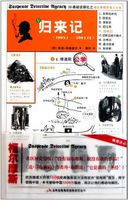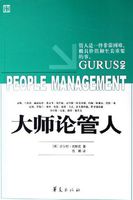Don't be too ambitious at the start. Go slow, and avoid unnecessary risks. At its best there is an element of danger in aviation which cannot be entirely eliminated, but it may be greatly reduced and minimized by the use of common sense.
Theoretically, the proper way to begin a glide is from the top of an incline, facing against the wind, so that the machine will soar until the attraction of gravitation draws it gradually to the ground. This is the manner in which experienced aviators operate, but it must be kept in mind that these men are experts. They understand air currents, know how to control the action and direction of their machines by shifting the position of their bodies, and by so doing avoid accidents which would be unavoidable by a novice.
Begin on Level Ground.
Make your first flights on level ground, having a couple of men to assist you in getting the apparatus under headway. Take your position in the center rectangle, back far enough to give the forward edges of the glider an inclination to tilt upward very slightly. Now start and run forward at a moderately rapid gait, one man at each end of the glider assisting you. As the glider cuts into the air the wind will catch under the uplifted edges of the curved planes, and buoy it up so that it will rise in the air and take you with it. This rise will not be great, just enough to keep you well clear of the ground.
Now project your legs a little to the front so as to shift the center of gravity a trifle and bring the edges of the glider on an exact level with the atmosphere. This, with the momentum acquired in the start, will keep the machine moving forward for some distance.
Effect of Body Movements.
When the weight of the body is slightly back of the center of gravity the edges of the advancing planes are tilted slightly upward. The glider in this position acts as a scoop, taking in the air which, in turn, lifts it off the ground. When a certain altitude is reached--this varies with the force of the wind--the tendency to a forward movement is lost and the glider comes to the ground.
It is to prolong the forward movement as much as possible that the operator shifts the center of gravity slightly, bringing the apparatus on an even keel as it were by lowering the advancing edges. This done, so long as there is momentum enough to keep the glider moving, it will remain afloat.
If you shift your body well forward it will bring the front edges of the glider down, and elevate the rear ones.
In this way the air will be "spilled" out at the rear, and, having lost the air support or buoyancy, the glider comes down to the ground. A few flights will make any ordinary man proficient in the control of his apparatus by his body movements, not only as concerns the elevating and depressing of the advancing edges, but also actual steering. You will quickly learn, for instance, that, as the shifting of the bodily weight backwards and forwards affects the upward and downward trend of the planes, so a movement sideways--to the left or the right--affects the direction in which the glider travels.
Ascends at an Angle.
In ascending, the glider and flying machine, like the bird, makes an angular, not a vertical flight. Just what this angle of ascension may be is difficult to determine.
It is probable and in fact altogether likely, that it varies with the force of the wind, weight of the rising body, power of propulsion, etc. This, in the language of physicists, is the angle of inclination, and, as a general thing, under normal conditions (still air) should be put down as about one in ten, or 5 3/4 degrees. This would be an ideal condition, but it has not, as vet been reached. The force of the wind affects the angle considerably, as does also the weight and velocity of the apparatus. In general practice the angle varies from 23 to 45 degrees. At more than 45 degrees the supporting effort is overcome by the resistance to forward motion.
Increasing the speed or propulsive force, tends to lessen the angle at which the machine may be successfully operated because it reduces the wind pressure.
Most of the modern flying machines are operated at an angle of 23 degrees, or less.
Maintaining an Equilibrium.
Stable equilibrium is one of the main essentials to successful flight, and this cannot be preserved in an uncertain, gusty wind, especially by an amateur. The novice should not attempt a glide unless the conditions are just right. These conditions are: A clear, level space, without obstructions, such as trees, etc., and a steady wind of not exceeding twelve miles an hour. Always fly against the wind.
When a reasonable amount of proficiency in the handling of the machine on level ground has been acquired the field of practice may be changed to some gentle slope. In starting from a slope it will be found easier to keep the machine afloat, but the experience at first is likely to be very disconcerting to a man of less than iron nerve. As the glider sails away from the top of the slope the distance between him and the ground increases rapidly until the aviator thinks he is up a hundred miles in the air. If he will keep cool, manipulate his apparatus so as to preserve its equilibrium, and "let nature take its course," he will come down gradually and safely to the ground at a considerable distance from the starting place.
This is one advantage of starting from an elevation--your machine will go further.
But, if the aviator becomes "rattled"; if he loses control of his machine, serious results, including a bad fall with risk of death, are almost certain. And yet this practice is just as necessary as the initial lessons on level ground. When judgment is used, and "haste made slowly," there is very little real danger. While experimenting with gliders the Wrights made flights innumerable under all sorts of conditions and never had an accident of any kind.
Effects of Wind Currents.















